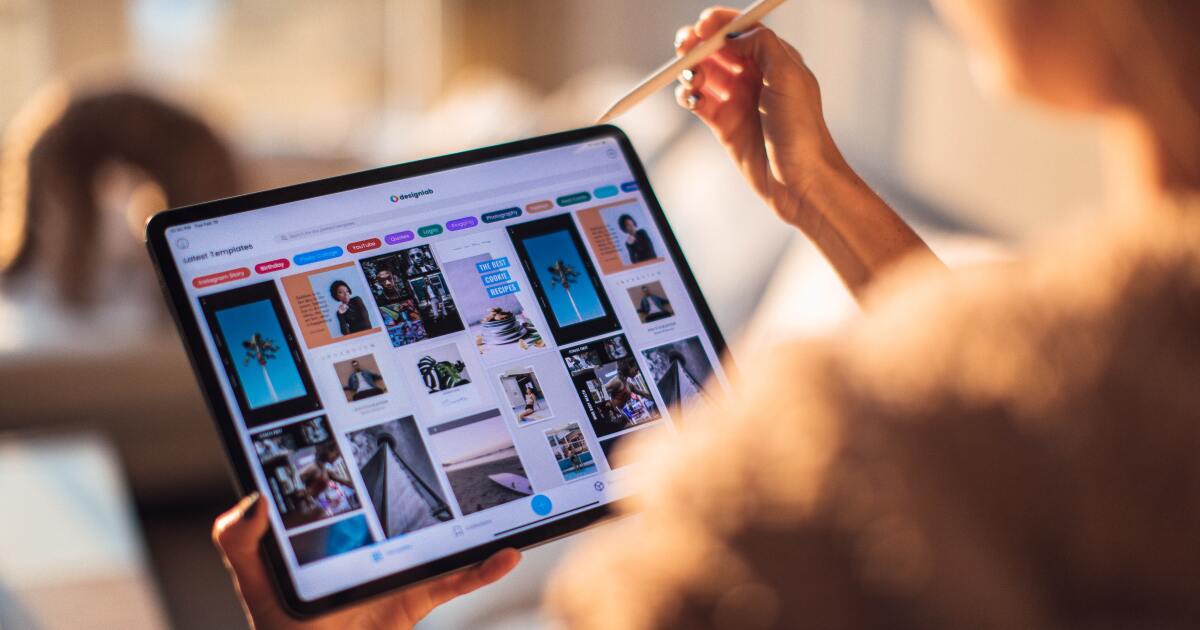"Work will look very different by 2032": This HR leader explains how the 'new normal' will evolve

The last two years have ushered in major changes for the state of work, from the increasing prominence of remote and hybrid models to the entire digitization of the workplace, employees are living in a “new normal.”
While the Bureau of Labor Statistics estimates that less than 10% of the population works from home due to COVID, anywhere from 25% to 35% of workers in the U.S. are working from home for reasons unrelated to the pandemic, according to Nick Bloom, a Stanford economics professor and co-founder of the Working From Home Research Project. Remote work no longer hinges on the existence of a public health crisis; instead, it’s becoming an accepted way to work.
Read more: Why most workplace tech tools still aren’t cutting it
“There is nothing ‘normal’ about the concept of a ‘new normal’ coming out of the pandemic; what we have gone through is unlike anything any of us have ever experienced,” says Tatiana Cirio, head of people at Rocket.Chat, an omnichannel communications platform. “While many things have returned to pre-pandemic styles, some movements have been accelerated. Jobs are becoming increasingly replaced by robots or automation and communication is becoming increasingly digital.”
Before COVID, just 6% of employees worked remotely, according to the National Council on Compensation Insurance. But once millions of Americans had to make an office out of their homes, reliance on video conferencing technology and communication platforms became more crucial than ever as the workplace became completely digital. And Cirio believes this acceleration has left its mark. EBN spoke to the people leader to learn what lies ahead for the state of work in the U.S.
Are remote and hybrid work models here to stay?
It’s important to recognize that the pandemic hasn’t created new work models. I’ve been meeting people, especially in the technology sector, that have been working remotely for years, even at large corporations.
Read more: Metaverse of madness: Employers and employees at odds over virtual workplaces
The service sector, in particular, has had to undergo massive change to still be successful throughout the pandemic. There has been a greater opportunity to test various work models and learn from them. Remote and hybrid were once taboo, but people and companies have expanded their minds to understand the benefits and how to do it properly. Companies have also turned to tools that can make their teams more productive.
There will always be language, cultural and time zone barriers with these work models, but as long as companies are open to being flexible and addressing those barriers head-on, we could see a large shift. A complete shift may not happen this year or even in the next few years, but with more companies testing different models, it’s likely work will look very different by 2032.
What digital workplace technology is vital to employers?
The minimum technology requirement for remote and hybrid work is having cloud storage for documents and data and having a digital communication tool. When it comes to communication, omnichannel tools are particularly important. There are so many different forms of communication now that it can be overwhelming for employees and lead to reduced productivity. By turning to omnichannel tools, which combine multiple forms of communication into one place, however, employees won’t be bombarded by multiple types of alerts and can see all communication in one place and remain productive.
While these are the bare minimum for digital work, it’s also important to keep in mind the security and privacy of the cloud and communication tools that are being used. Companies must also invest heavily in proper cybersecurity protection to make sure all employees and their data are safe.
How will companies sustain employee connection and engagement in the new normal?
Employee connection and engagement should not change if a company has been treating people as human beings and showing a genuine interest in their lives. Communication should have always been and should always be transparent and open, whether it’s happening in-person or digitally. While in-person communication helps us notice behavior or body language easier, managers and teammates should still have a pulse on their colleagues digitally. It’s more important than ever to prioritize one-on-ones, team activities and non-work-related conversations to ensure a genuine human connection is never lost.
Read more: Is virtual care the key to better, more equitable health outcomes?
What work models will become things of the past?
Those that have focused on command and control. People are seeking autonomy now more than ever before, so micromanagement and control tactics don’t have a spot in the workplace anymore. It’s becoming impossible for companies to be innovative and creative when managers are controlling their employees’ every move. Innovation and creativity can only come from a collective environment of trust, autonomy and empowerment of people.
What will work look like in the next decade?
Companies and team leaders will have to be very cognizant of their teams’ mental health. One of the drawbacks of remote work is the idea that ‘you’re always on’, so companies that work to break that stigma will be the most successful. Also, geopolitical and other global issues will continue to have an effect on employee morale, so companies need to be mindful and sensitive to that.
I also think we’ll be seeing a shift in education over the next decade. Job requirements and types of jobs will be changing dramatically as we continue to rely more heavily on technology, so employees must always stay on top of what’s next. Beyond a traditional school or university education, employees should keep up with industry-specific trainings and certifications to stay at the top of their game.



